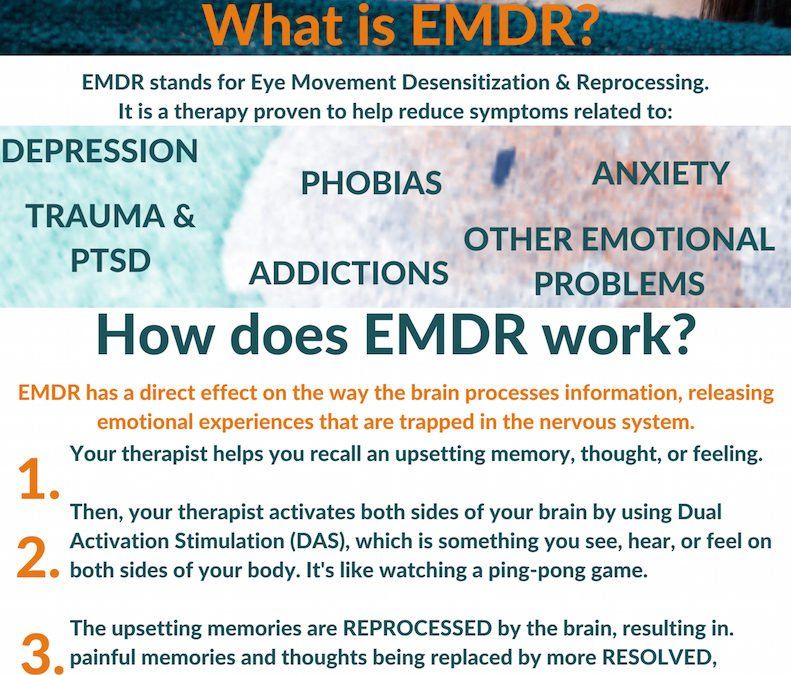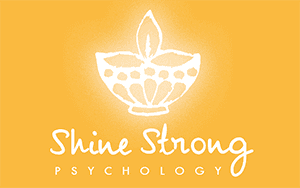Accredited EMDR professional
What is EMDR?
Eye Movement Desensitization and Reprocessing (EMDR) therapy is used specifically to treat trauma, Post Traumatic Stress Disorder (PTSD) and complex PTSD however we know that it can also treat many other forms of issues such as anxiety, depression and phobias. Watch the video to learn more.
Our EMDR service is available Australia-wide.
What is EMDR?
Eye Movement Desensitization and Reprocessing (EMDR) therapy is used specifically to treat trauma, Post Traumatic Stress Disorder (PTSD) and complex PTSD however we know that it can also treat many other forms of issues such as anxiety, depression and phobias. It is an eight-stage therapy that the client will be directed through. This will include a session of history taking, a session of preparation which includes building some resources to help emotionally regulate, assessment, then processing the memory and finally evaluation.
The purpose of EMDR is to helps individuals process memories that still cause negative experiences in their current life such as flash backs, nightmares or anxiety/depression. As those who have gone through a traumatic experience knows the event can leave you with physical sensations such as smells, touch or pain along with emotions or negative thoughts that may circle around your mind. It can also be so bad as to leave you with the sense that you are reliving the experience repeatedly with all the same fears, worries, physical sensations and thoughts as the day the trauma happened. It’s as if the past trauma floods into the present moment making it extremely difficult to move forward.
EMDR focuses on how the memory is stored in the brain and what happens when the memory is triggered in order to reduce the problematic effects of the memory (American Psychological Association).
So during an EMDR session it is the goal of the therapist to link the memory back to the physical sensations with the thoughts attached so the memory can be resolved and reprocessed into an adaptive memory system within the brain neutralising the negative residues of the trauma. EMDR also brings positive recourses into the memory network of the trauma to assist the individual to notice that “they are safe now” or “it is over I am in control now”. The purpose of this is to assist the individual to notice that they have now gained control of the physical reactions, thoughts, and emotions that the memory brings rather than having a sense of helplessness.
By processing all of this it illuminates any future triggers and increase the client’s ability to function better within their current lives and having a positive impact on their relationships.
What does an EMDR session look like?
The therapist will ask you to get an image of the trauma, then find the negative thought that goes along with this such as “I am not safe”. Then you will be asked to notice the emotion and locate any physical symptoms in the body and then rate how strong a disturbance it is out of ten. Next the therapist will direct you to figure out what positive thought you may want to go with this image such as “it is over, I’m safe now”.
Once all of this is done the therapist will activate bilateral stimulation (activating both hemispheres of the brain) through sight, feeling or hearing. To do this the client will either follow a light bar from left to right for about 20 seconds with their eyes, listen to sounds that move from left to right in headphones or hold tactile functions (tacas) for bilateral stimulation in their hands that let off impulses changing from one hand to another.
Remote/online sessions available now, Australia-wide.
Remote EMDR
We offer online EMDR therapy Australia-wide.
It’s easy, safe and comfortable in your own home. Whether you require now due to the COVID-19 situation, if you live in a remote community unable to attend cities for therapy, for mobility issues or for anyone who finds themselves isolated at home for any reason.
Our remote EMDR sessions are available Australia-wide.
Video resources

Image above courtesy of Kindred Counseling.
CONTACT US



